Reading several excellent articles, here and elsewhere, introduced me to an area of photography I had only considered as snap-shooter territory, the 110 Pocket Instamatics. This film size flourished from 1972 to the late 1990s before being eclipsed by digital.
Some of the sample images weren’t all that bad so modern emulsions could have lifted the game for these little cameras. Lomography must take most of the credit for the film side of things today, producing a selection of them. I also discovered that the cameras were far from being restricted to “focus free, plastic fantastics” with a whole range to choose from. They were easy to load and use like the 126 Instamatics but pocketable, like the mobile phone today. A camera to keep with you all the time but perhaps not a ‘serious’ format. Kodak’s own advertising talks about 3 1/4” x 4 1/4” prints as being the intended output, meaning album size prints. Transparencies for projection were also mentioned with a dedicated version of the Carousel projector on offer.
I began to wonder what could be wrung out of these tiny negatives with a modern emulsion and digital post. At roughly one quarter the area of 35mm it is about the size of a Micro 4/3 sensor.
Prompted by an auction listing for a Minolta Autopak 460 Tx at a very reasonable NZ$16, around £7.50, I thought I would give it a try.
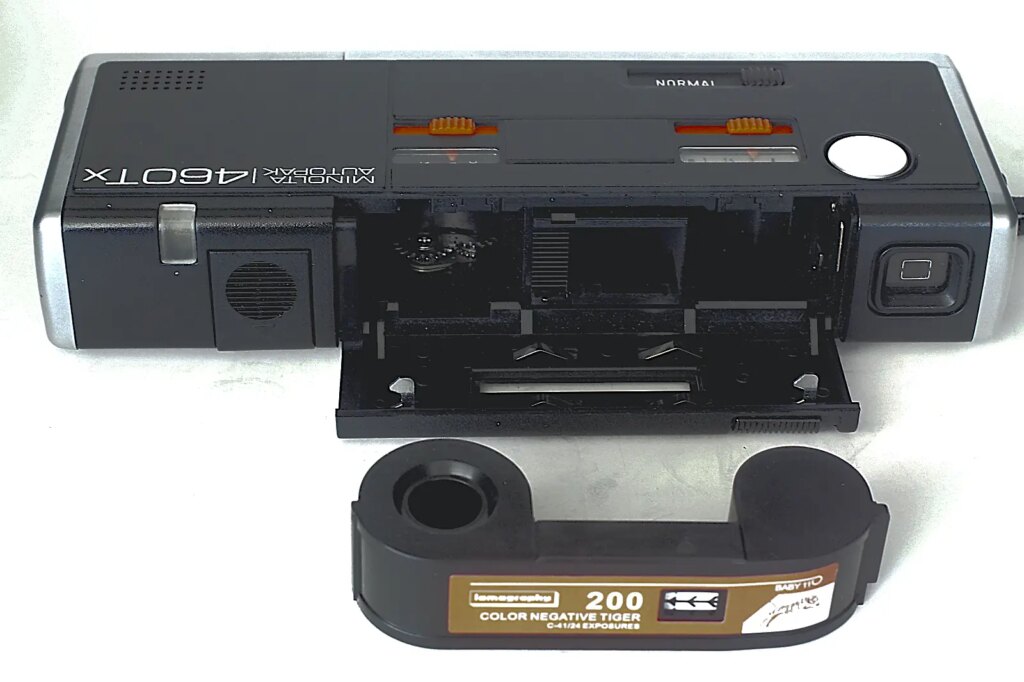
This model was at the top end of Minolta’s 110 range when it was new, with focussing standard and telephoto lenses and a built in flash. Exposure was monitored by the camera and warnings given in the finder of over or under exposure or the need for flash. The lenses are Rokkors of 4 element f3.5 26mm and 3 element f4.7 43mm construction respectively.
My Minolta Pocket Autopak 460 Tx.
Though described as fully working the last time it was used, clearly there was a problem with the power delivery. The flash refused to work, the warning lights didn’t warn and the illuminated distance scale wasn’t. In addition, there was a noticeable smudge inside the standard lens cover glass which wasn’t going to do the, probably, marginal definition any favours and resisted all my attempts to remove it.
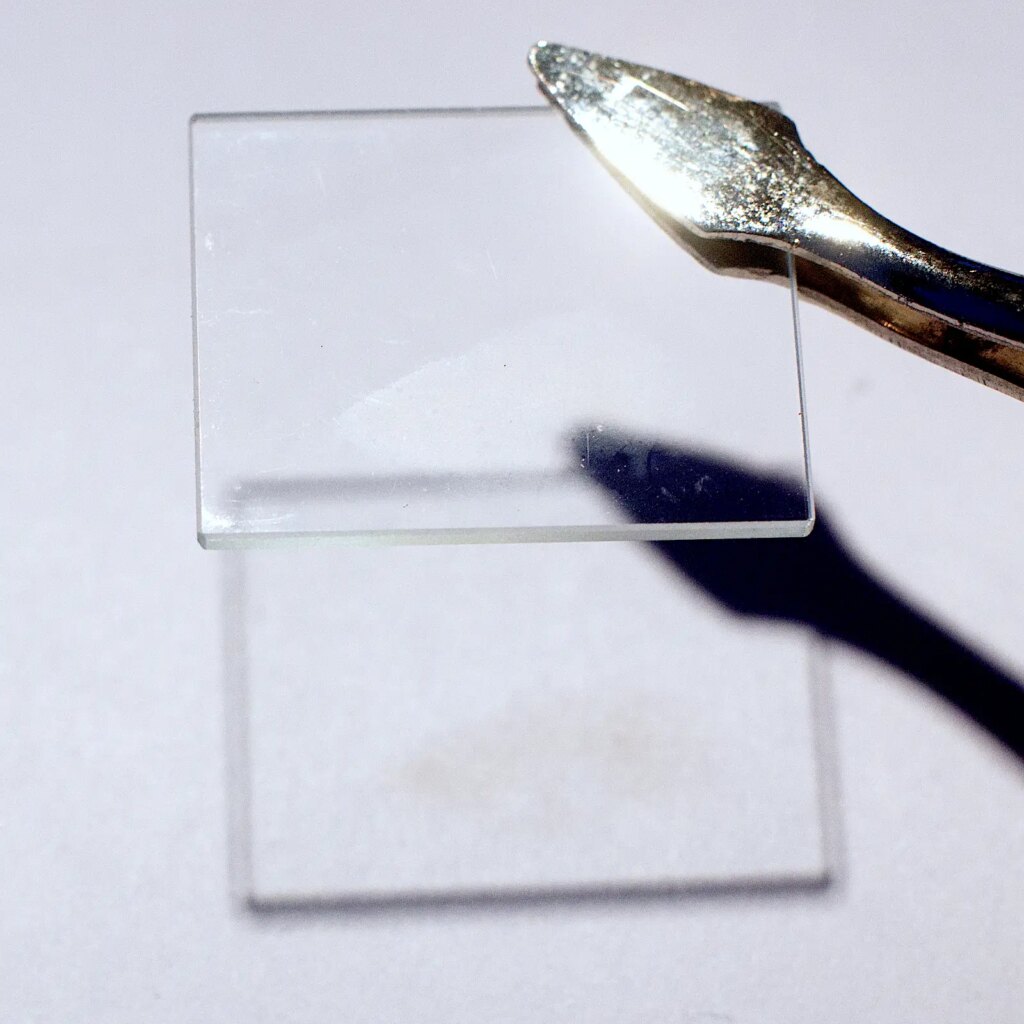
So why bother?
Well, having reached an age myself when not everything works as it should any more, I have an affinity with the less than perfect. I have two other cameras that have failings but that I use on and off, neither justifying the cost of repair. As far as results go, however, and the photographers skill apart, the lens is what really matters with any camera and all of these three can produce good negs for their size. None justify the outlay of a full repair yet are still functional and are the only representatives of their respective formats that I own, so I persevere. There is also a certain satisfaction about working round a problem as well as learning a lot about how things work in the process.
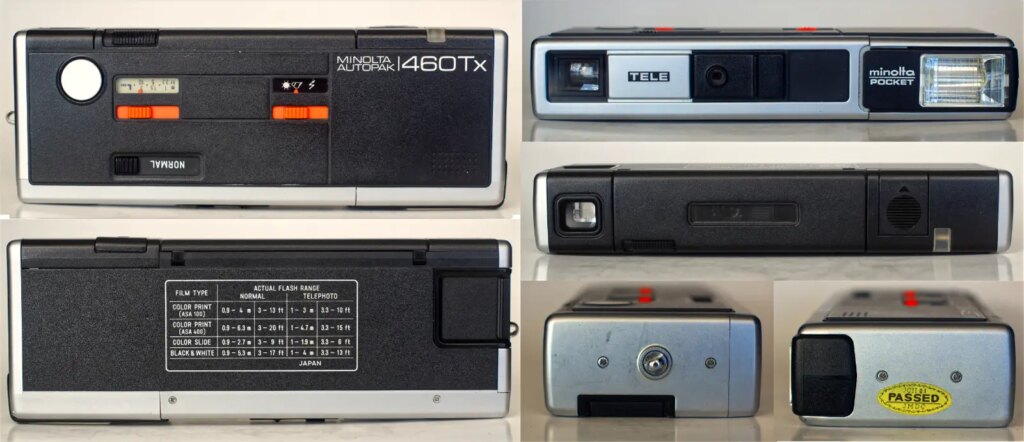
The camera follows the form factor common to the general concept of a ’spy’ camera if a little chunkier. 16mm cine film has been used for some time previously in the familiar, Minox-style cameras, as used for espionage everywhere. The 110 format uses only one perforation per frame, like later 16mm stock, rather than the earlier cine film’s perforations along both edges thus allowing a slightly larger image size of 17mm x 13mm.
The camera is a nice size and weight with good ergonomics making it easy to hold and operate. Some metal is used in its construction giving it the convincing feel of a serious piece of equipment. Everything falls conveniently to finger or thumb, the reflected frame viewfinder is clear and bright, and easy to use for someone like me who wears glasses. It came in a neat, well-fitting leather pouch and with a cord loop fixed to a swivel at one end of the camera. Altogether a neat design.
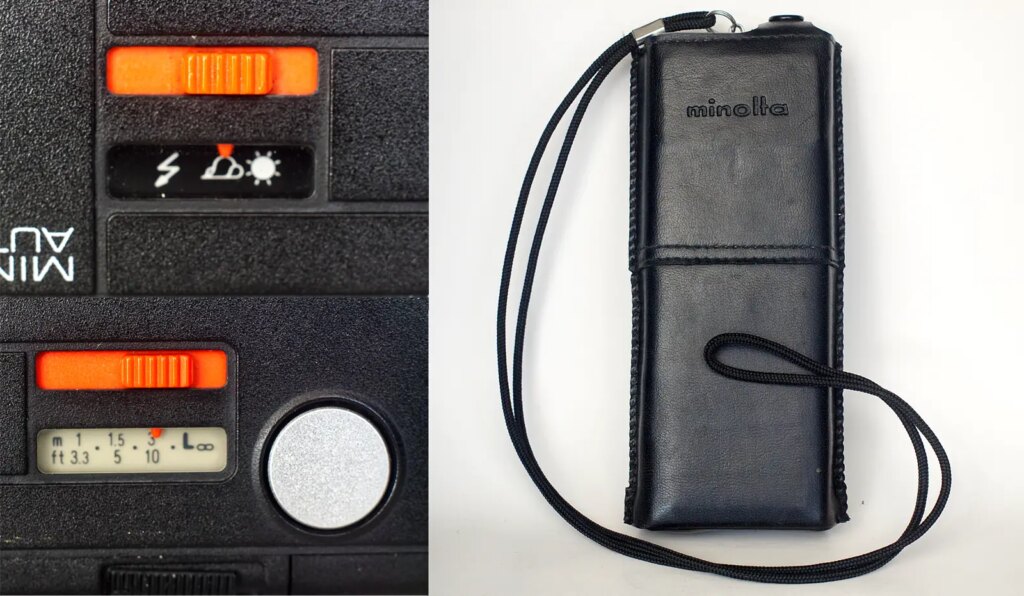
There are three exposure settings marked Flash/Cloudy/Sunny, these extend the flash and change the aperture between f3.5 and f8 for the standard lens, half to one stop or so less for the telephoto. With the flash selected the aperture is linked to the focus which alters it within the ranges shown in the table on the underside of the camera. “Sunny” sets the minimum aperture for either lens and “Cloudy”, the intermediate one. Maximum aperture is only available when the flash is selected.
Focus is also variable by scale between 3.3ft and ∞.
The shutter is a fixed 1/200th second in order to avoid camera shake according to the manual.
I discovered that film speed is set automatically by a tab on the cartridge but is either ISO 80 or 200. ISO 400 film became available later so might be a problem in some cases. The Lomography Tiger ISO 200 C41 colour film I planned to use is compatible and should give good exposure if the exposure meter was working.
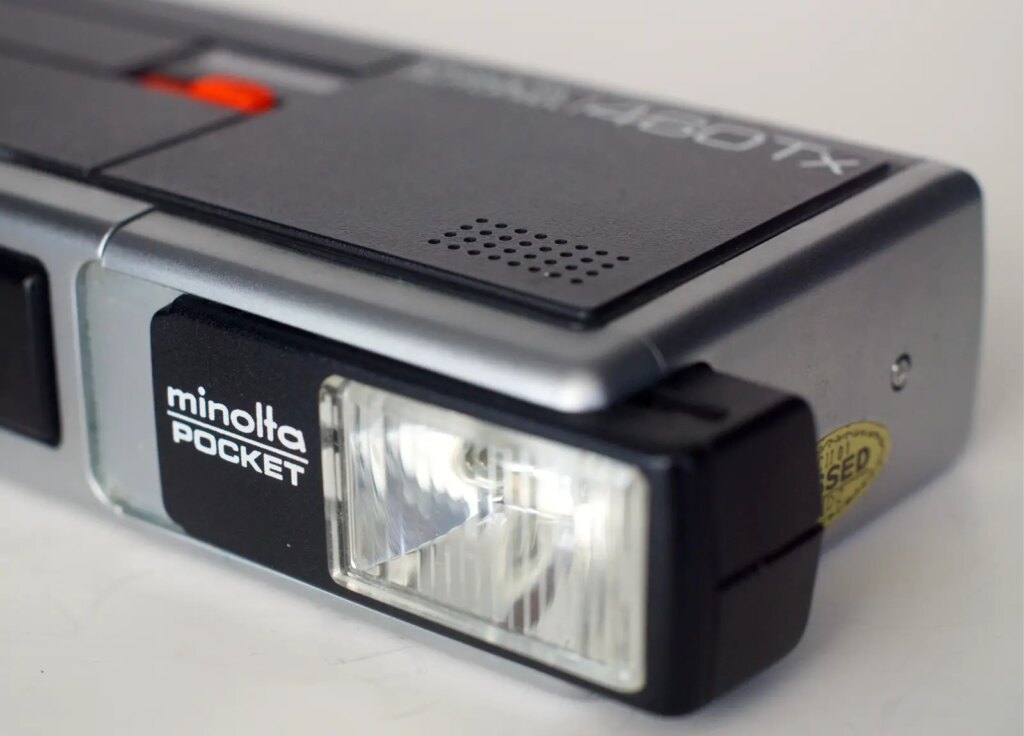
Problems and solutions.
Investigating the power problem proved fruitless, electronics being quite an impenetrable mystery to me at the best of times let alone in a tiny camera like this one. The camera works without power anyway, with no flash of course, but by selecting the flash unit, which then pops out of the end of the body, would vary the stop depending on the focus distance set even though it wouldn’t fire. As mentioned, at the closest setting the aperture will be closed down to the smallest and opened up fully for longer distances within the flash range shown by the table on the underside of the camera. Exposure at closest focus will be 1/200 at f8 for the normal lens or f11-16 for the telephoto. Maximum aperture will be reached at 10-13 feet and beyond, all this adding to the exposure permutations available.
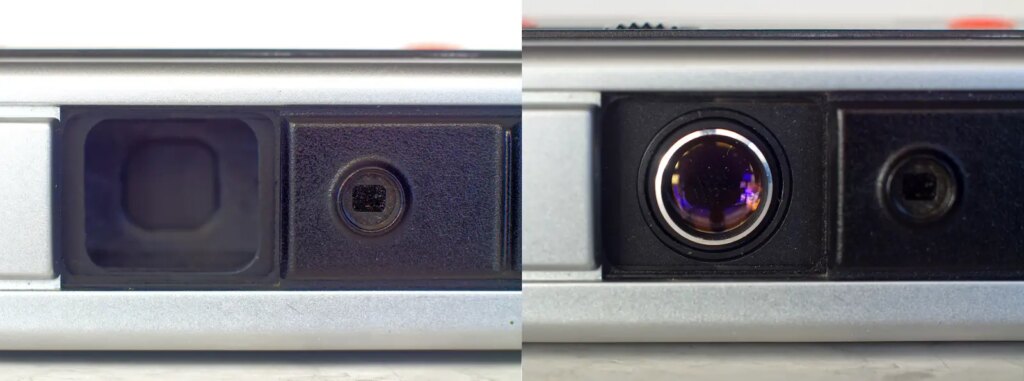
Whilst it was dismantled I removed the cover glass protecting the standard lens to give it the best chance. When closed with a sliding panel the opening is covered and so is protected but sits behind the shutter anyway. This sliding panel locks the shutter and, originally, switched everything off. It may form part of the lens design as is sometimes the case but removing it seemed the lesser of two evils. Results later suggested it made no difference.
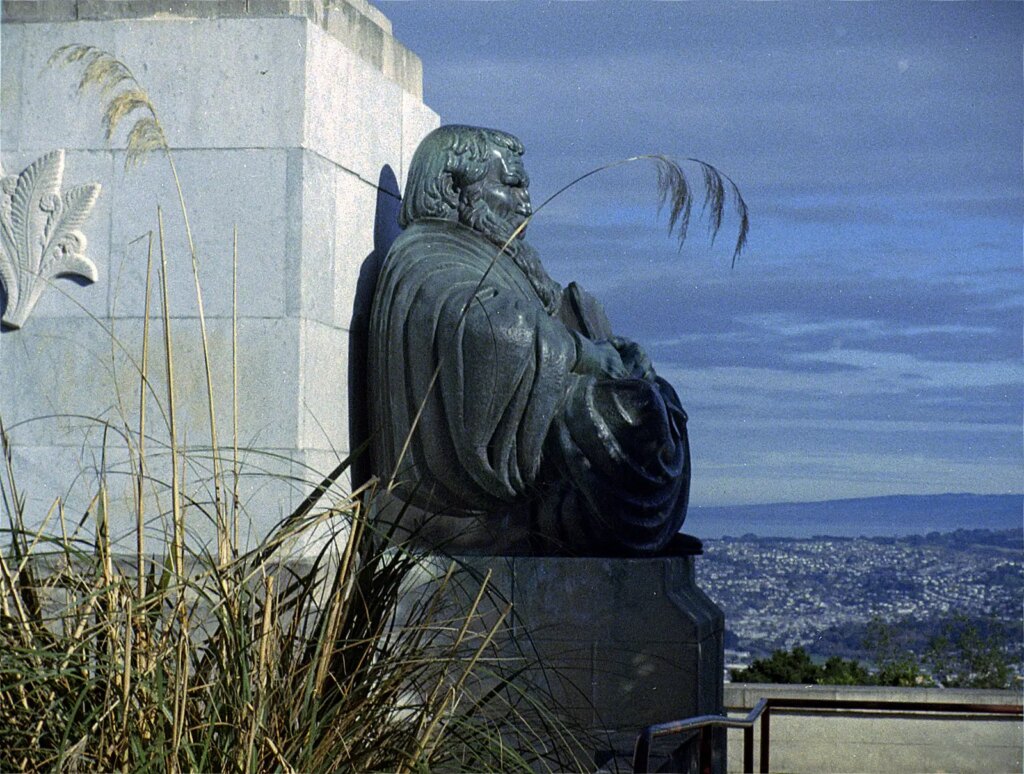


Out and about
Taking a meter and rangefinder with me to help with exposure and focus (which I completely forgot about for the first three exposures), I visited a couple of my regular spots for some comparison shots and to make use of the close focussing capabilities.
Using the camera is a very pleasant experience indeed. As mentioned, the ergonomics are excellent and the finder clear with no cut-off when wearing glasses.
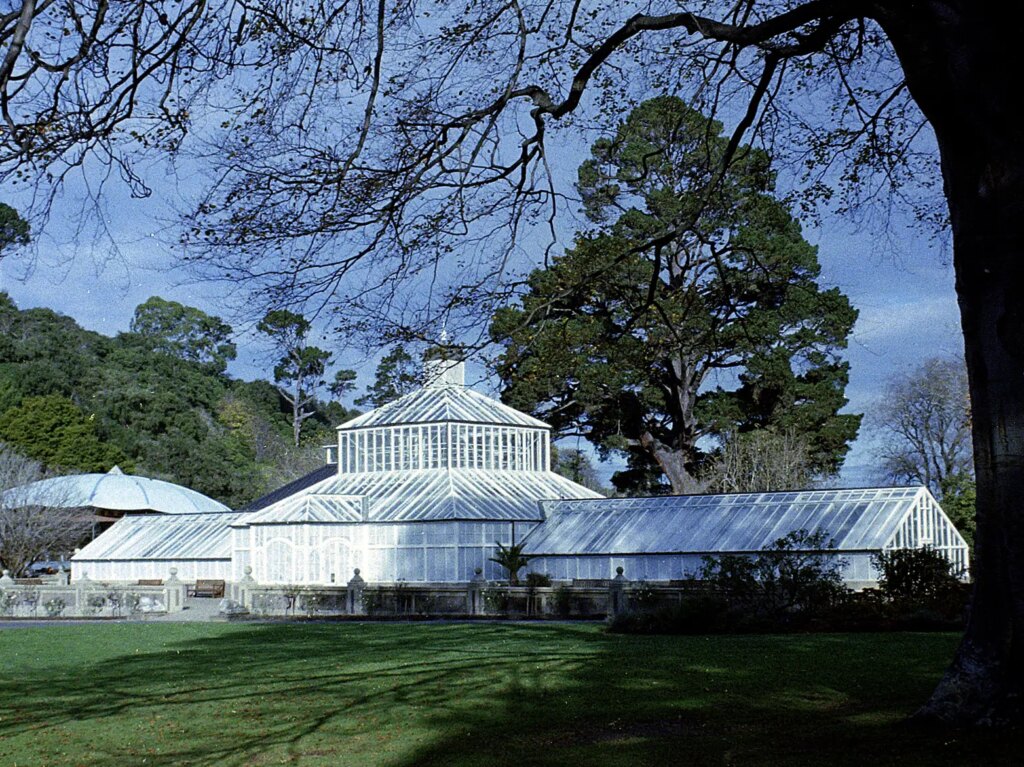
Results.
Unfortunately results were a bit of a mixed bag, though only one frame was a complete bust and down to me anyway. As expected, definition from the tiny negatives seems to be just that bit lacking to varying degrees in some shots. In fairness, some of the softness may be induced by the tiny depth of field offered by the high magnifications needed with my copier set-up when digitising. I used a reversed Micro Nikkor on extension tubes to get a full 20mp file so focus was very demanding indeed, not helped by the near non-existent grain of the film.


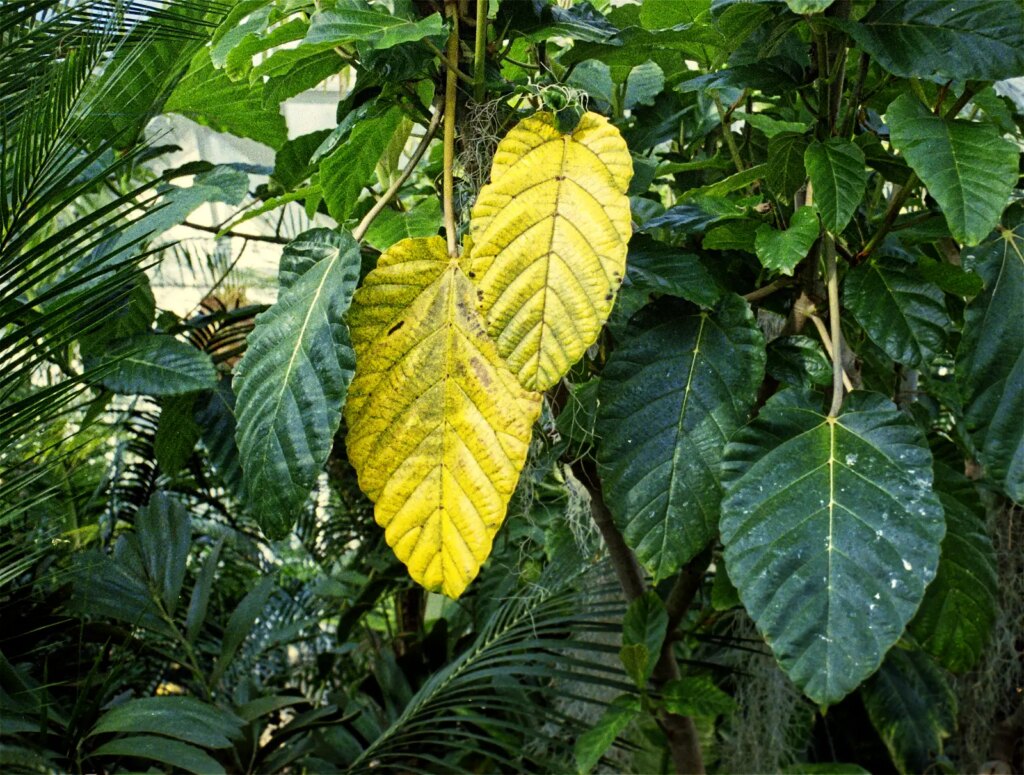
In the long shot of the Tropical House, the left hand end of the building is a little over exposed compared to the right and spread of the highlights of the gazing bars makes them look a little soft. Too generous exposure causing halation may be having an effect on definition with such small negatives.
All in all however, given the small size of the negatives, results are better than I would have expected, in some cases far more so, but in others not so much and one or two quite un-useable. The apparently well known problem of less than precise film registration the little cassettes can suffer from seems to be a factor here. And, ideally, subject matter has to be bold and well defined I think.
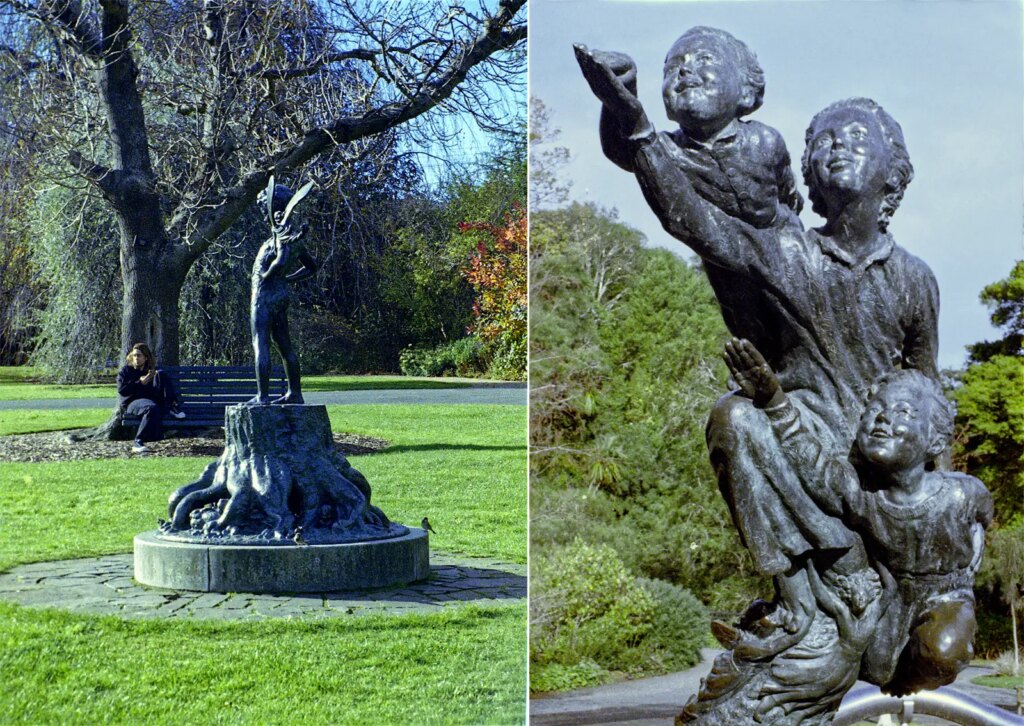
The contribution of digital post must be acknowledged. When viewing the negatives through a loupe, they look nowhere near as crisp as some of them look after processing.
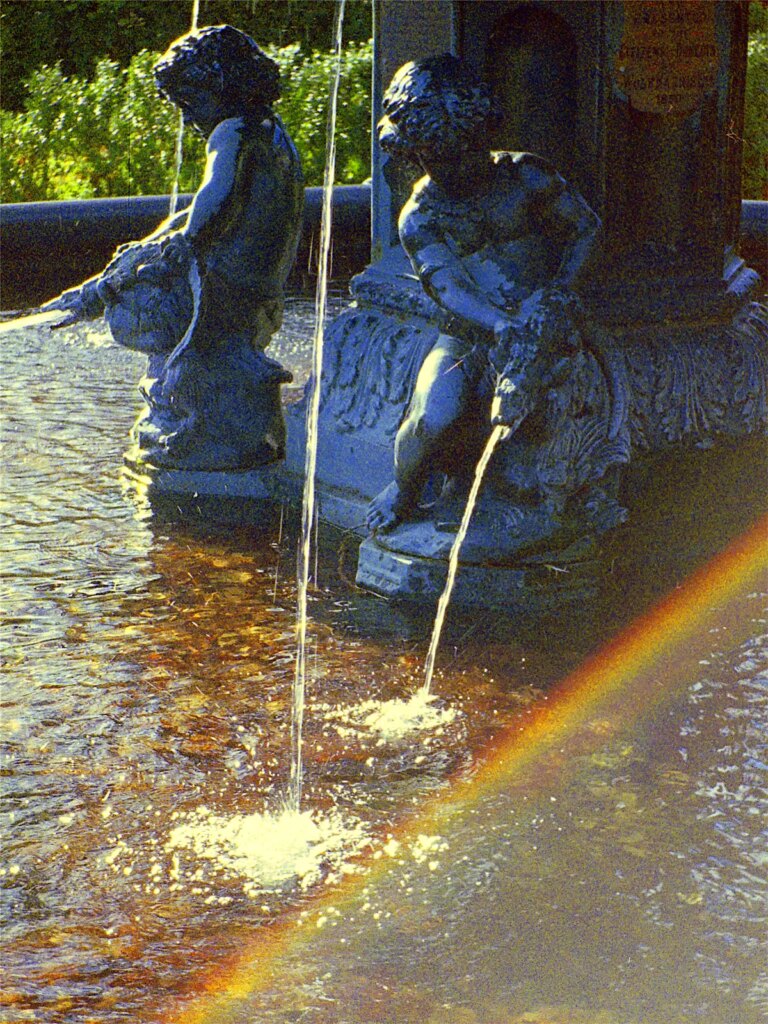
Optically, the Rokkor lenses acquit themselves well, especially the telephoto, but with the caveat that accurate focus is key, as with any lens. The telephoto lens is quite exposed when selected and produced some interesting flare when shooting into the sun.
The Lomography Tiger colour neg film is extremely fine grained, as mentioned, with vibrant colour so no complaints there. I taped over the film window to avoid the ‘golden orb’ problem but that didn’t exclude a lot of dust and scratches that needed a great deal of spotting out. Processing and subsequent handling by me and others are the most likely culprits. As mentioned above, exposure of bright highlights in fine detail may need to be controlled for best definition.
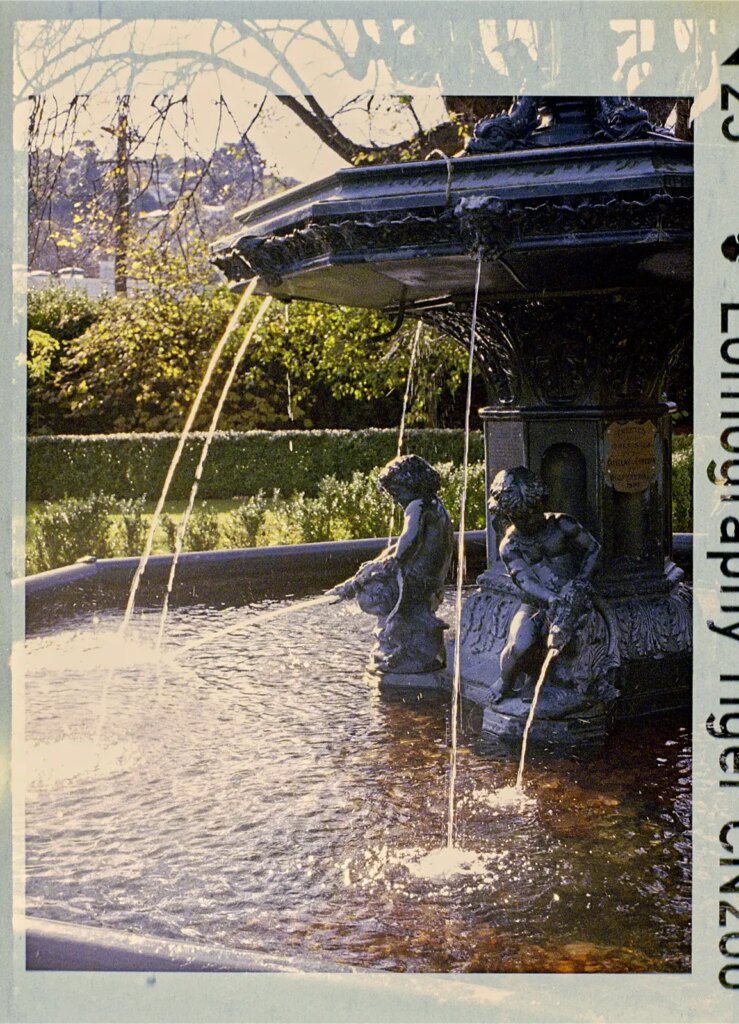
The processed film showed up a strange aspect of 110 films. The film is pre-exposed with lettering and frame numbers as usual. Each frame’s print area is also pre-exposed to a size which crops it to a noticeable extent, wasting some of the lens’ coverage. I have included an example to show this. The overprinting may be linked to the machine printing stage I imagine.
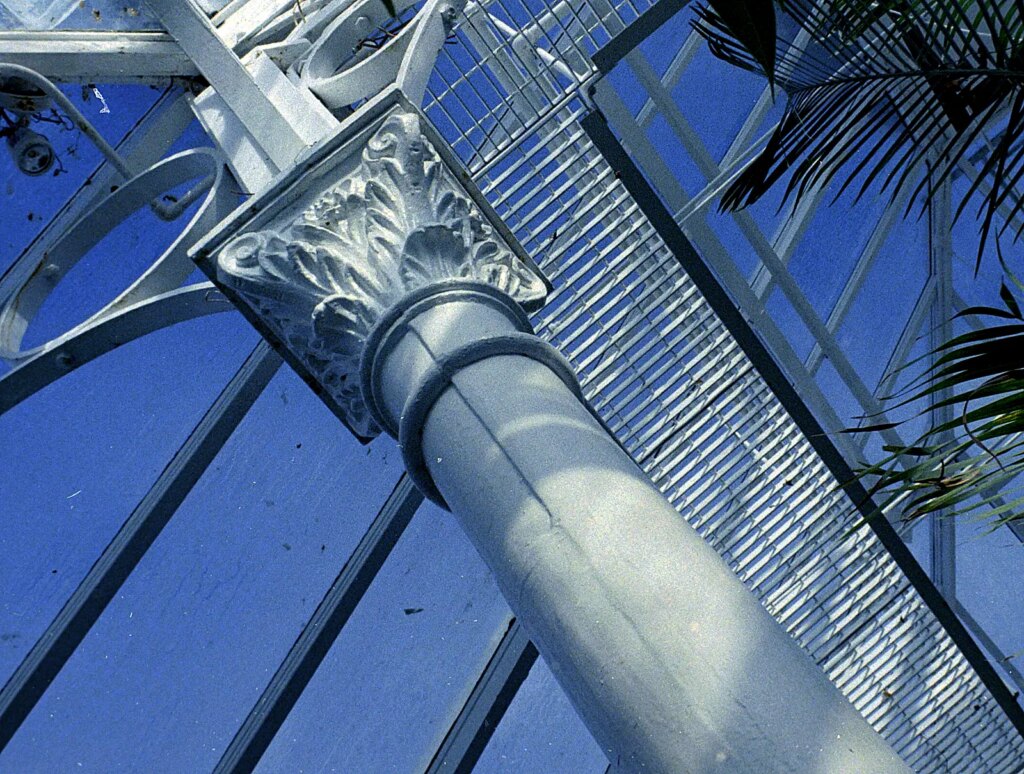
And finally.
Given the Minolta Pocket Autopak 460 Tx is around 25 years old or so and cost me just half the price of a film and processing, I was less disappointed than I expected to be. I must say that I am not won over to the format for my own purposes despite having enjoyed using the camera. One of the best handling instruments I have used in fact. For me, however, the limitations on subject choice, the unpredictability of results and the digitising process I employ being so challenging, means I will mostly consign the little Minolta to the display shelf. I might be tempted back into the water if a Canon 110 ED or ED20 appears on the scene. Its coupled rangefinder and automatic exposure would eliminate some of the limitations.
Overall, an interesting and informative exercise which has taught me a great deal about the format. If nothing else, it has made me appreciate all the more what has been achieved with M4/3 equipment.
Photos of the camera and digitised copies of negatives are produced with a Sony A3000 with 55mm Ai’d Micro Nikkor and adapters, processed in Affinity Photo.
If you want to have a go at shooting 110 film yourself, have a read of this article for some advice and tips: 110 Film in 2021 – A Guide to Shooting, Developing and Scanning by Bob Janes
Share this post:
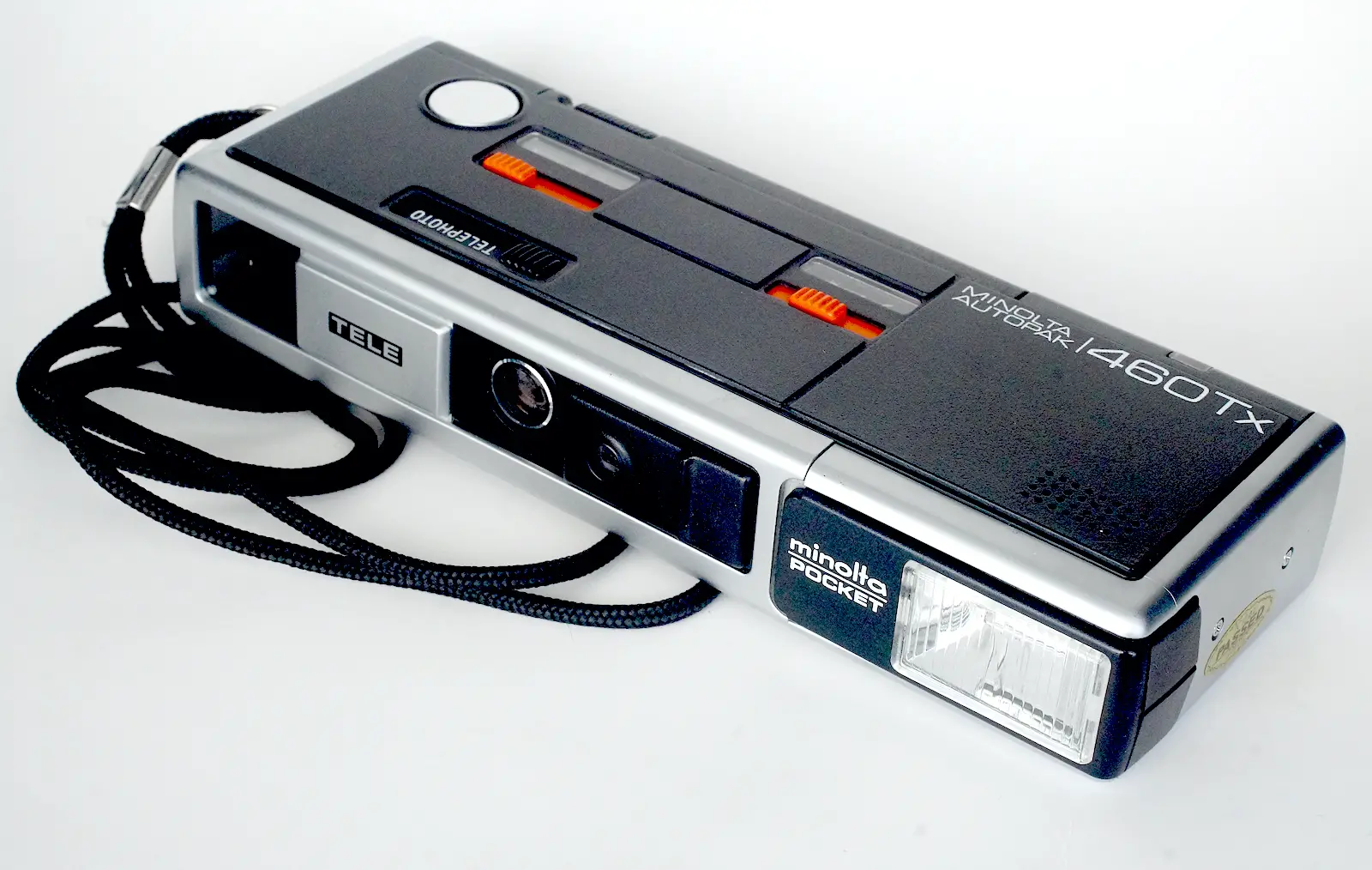








Comments
Bob Janes on Minolta Pocket Autopak 460 Tx 110 – A Shooting Experience
Comment posted: 02/08/2023
Good to see some sub-minature articles!
Comment posted: 02/08/2023
Comment posted: 02/08/2023
Anthony Conroy on Minolta Pocket Autopak 460 Tx 110 – A Shooting Experience
Comment posted: 02/08/2023
May have been a bit hasty there especially seeing your images very impressive from such tiny
Negs (tick)
Comment posted: 02/08/2023
Comment posted: 02/08/2023
Comment posted: 02/08/2023
christian hogue on Minolta Pocket Autopak 460 Tx 110 – A Shooting Experience
Comment posted: 02/08/2023
Comment posted: 02/08/2023
Julian Tanase on Minolta Pocket Autopak 460 Tx 110 – A Shooting Experience
Comment posted: 02/08/2023
You would like the results of reloading your cartridges with some good bw film. It will provide some perhaps better images, but as you said, it all depends on various factors. It's worth a try nonetheless.
One more thing: the Minox negative is 8x11 (at a 9.2mm width), not 16mm.
Comment posted: 02/08/2023
Paul Quellin on Minolta Pocket Autopak 460 Tx 110 – A Shooting Experience
Comment posted: 02/08/2023
Comment posted: 02/08/2023
Peter Sime on Minolta Pocket Autopak 460 Tx 110 – A Shooting Experience
Comment posted: 03/08/2023
Comment posted: 03/08/2023
Brian Nicholls on Minolta Pocket Autopak 460 Tx 110 – A Shooting Experience
Comment posted: 03/08/2023
Comment posted: 03/08/2023
David Leeds on Minolta Pocket Autopak 460 Tx 110 – A Shooting Experience
Comment posted: 06/08/2023
Comment posted: 06/08/2023
Jeremy on Minolta Pocket Autopak 460 Tx 110 – A Shooting Experience
Comment posted: 07/08/2023
Comment posted: 07/08/2023
James on Minolta Pocket Autopak 460 Tx 110 – A Shooting Experience
Comment posted: 08/08/2023
I just picked up a Hanimex 110TF as part of a $20.00 yard sale bundle that also included a Canon AE-1 and a Minolta Hi-Matic F. All three are working, functioning, yet unwanted cameras. One person's junk is another person's joy, hey?! Your piece here has further inspired me to get some Lomography 110 rolls, to see what I can get out of the old Hanimex. Very much looking forward to the experience. I'll be shooting in both colour, and b/w. (When will Lomgraphy recreate the 620 spool, so we don't have to doctor, or re-roll 120 onto a 620 spool?! There's certainly a market for such a launch - I'd imagine just as much as there's a market for 110 being brought back from the dead. Dare I wish for some 126 and 127 from Lomgraphy, as well?! So many obsolete cameras could be brought back to life. Seems a worthy endeavour, to this thrift store junkie!)
Comment posted: 08/08/2023
Comment posted: 08/08/2023
Alasdair J Mackintosh on Minolta Pocket Autopak 460 Tx 110 – A Shooting Experience
Comment posted: 19/08/2023
Of course, it is possible to get decent results from small film. Smaller budget features used to be shot on 16mm, and so have some more recent ones. ("Hurt Locker", I think, plus part of the Steve Jobs biopic.) I'm almost tempted to try it myself ;-)
Comment posted: 19/08/2023